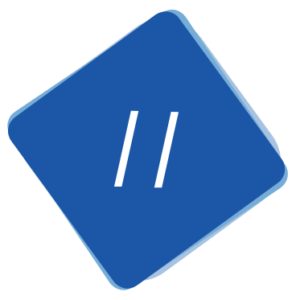Cross-platform development has revolutionized how businesses build applications, enabling them to reach multiple operating systems with a single codebase. Frameworks like Flutter, React Native, and Xamarin have made it easier for developers to create apps that work across iOS, Android, and even desktop environments. However, as the demand for high-performance, scalable, and cost-efficient applications grows, cross-platform development continues to evolve.
This article explores the current state of cross-platform development, emerging trends shaping the industry, and what the future holds for businesses looking to leverage these technologies.
The Current State of Cross-Platform Development
Cross-platform development has become a viable alternative to native development, thanks to improvements in frameworks and toolkits. Here’s an overview of the dominant players:
- FlutterGoogle’s UI toolkit is gaining traction for its fast rendering engine and seamless performance across multiple platforms.
- React NativeBacked by Meta, React Native boasts a strong ecosystem and a large community of developers.
- Xamarin & .NET MAUIMicrosoft’s solution for C#-based cross-platform development is evolving with .NET MAUI as a unified framework.
Despite these advancements, challenges remain:
- Performance Trade-offsWhile Flutter and React Native have improved significantly, they still lag behind native development in areas like complex animations and heavy processing tasks.
- Platform-Specific InconsistenciesFrameworks attempt to unify development, but OS-level differences can still lead to inconsistencies that require native bridging.
- Debugging ComplexityCross-platform tools introduce additional layers of abstraction, making debugging more challenging than in native environments.
Emerging Technologies Shaping Cross-Platform Development
The future of cross-platform development is being shaped by several key technological advancements:
1. AI-Driven Development
AI-powered tools like GitHub Copilot and OpenAI Codex are automating repetitive coding tasks, reducing development time, and improving code quality. These tools enhance developer productivity and are expected to become more deeply integrated into cross-platform frameworks.
2. WebAssembly (WASM) for Near-Native Performance
WebAssembly allows developers to run high-performance applications in a browser, making web-based cross-platform solutions more competitive. This technology is paving the way for powerful web applications that can rival native apps.
3. Advancements in UI Toolkits
Flutter’s latest updates, Jetpack Compose’s cross-platform capabilities, and SwiftUI’s evolution are redefining how developers build UIs that feel native across multiple platforms.
4. Cloud-First Development
Serverless computing and backend-as-a-service (BaaS) solutions are increasingly being integrated into cross-platform applications. This enables developers to offload backend management to the cloud, reducing development complexity and infrastructure costs.
The Shift Toward Progressive Web Apps (PWAs)
Progressive Web Apps (PWAs) are emerging as a viable alternative to traditional mobile applications, offering a seamless user experience across devices without requiring app store distribution. Benefits of PWAs include:
- Offline FunctionalityService workers allow PWAs to function without an internet connection, providing versatile usability.
- Improved PerformanceLeveraging modern web technologies results in faster load times and reduced resource consumption.
- Cost EfficiencyBusinesses can maintain a single web-based app instead of developing separate native versions.
Companies like Twitter, Starbucks, and Pinterest have successfully implemented PWAs, demonstrating their effectiveness for both consumer and enterprise applications.
The Future of Cross-Platform Frameworks
Several emerging trends will shape the next generation of cross-platform development:
- Flutter vs. Jetpack Compose vs. SwiftUIAs Flutter continues to evolve, Google’s Jetpack Compose and Apple’s SwiftUI are also gaining traction for native-like UI development across platforms.
- The Rise of Kotlin MultiplatformKotlin’s growing adoption in Android development is extending to cross-platform capabilities, making it a strong contender for businesses.
- React Native’s FutureWith improvements like Fabric and TurboModules, React Native aims to enhance performance and streamline development workflows.
- The Comeback of Hybrid Solutions (Capacitor, Ionic)New hybrid frameworks are bridging the gap between web and mobile development, offering a more flexible approach to cross-platform applications.
Practical Considerations for Businesses
For businesses deciding between cross-platform and native development, several factors should be considered:
- Time-to-MarketCross-platform development significantly reduces development time, making it ideal for startups and enterprises looking for rapid deployment.
- Cost EfficiencyA single codebase minimizes maintenance costs and resource allocation, saving you room in your budget.
- Industry-Specific NeedsSome industries, like gaming and high-security applications, may still require native development for optimal performance.
Embrace the Future
Cross-platform development is evolving rapidly, driven by advancements in AI, WebAssembly, and cloud computing. While frameworks like Flutter and React Native continue to improve, new technologies like Kotlin Multiplatform and PWAs are expanding the possibilities for businesses.
As companies plan their future development strategies, understanding these trends will be crucial in making informed decisions. The future of cross-platform development is promising, offering businesses more flexibility, efficiency, and innovation than ever before.



